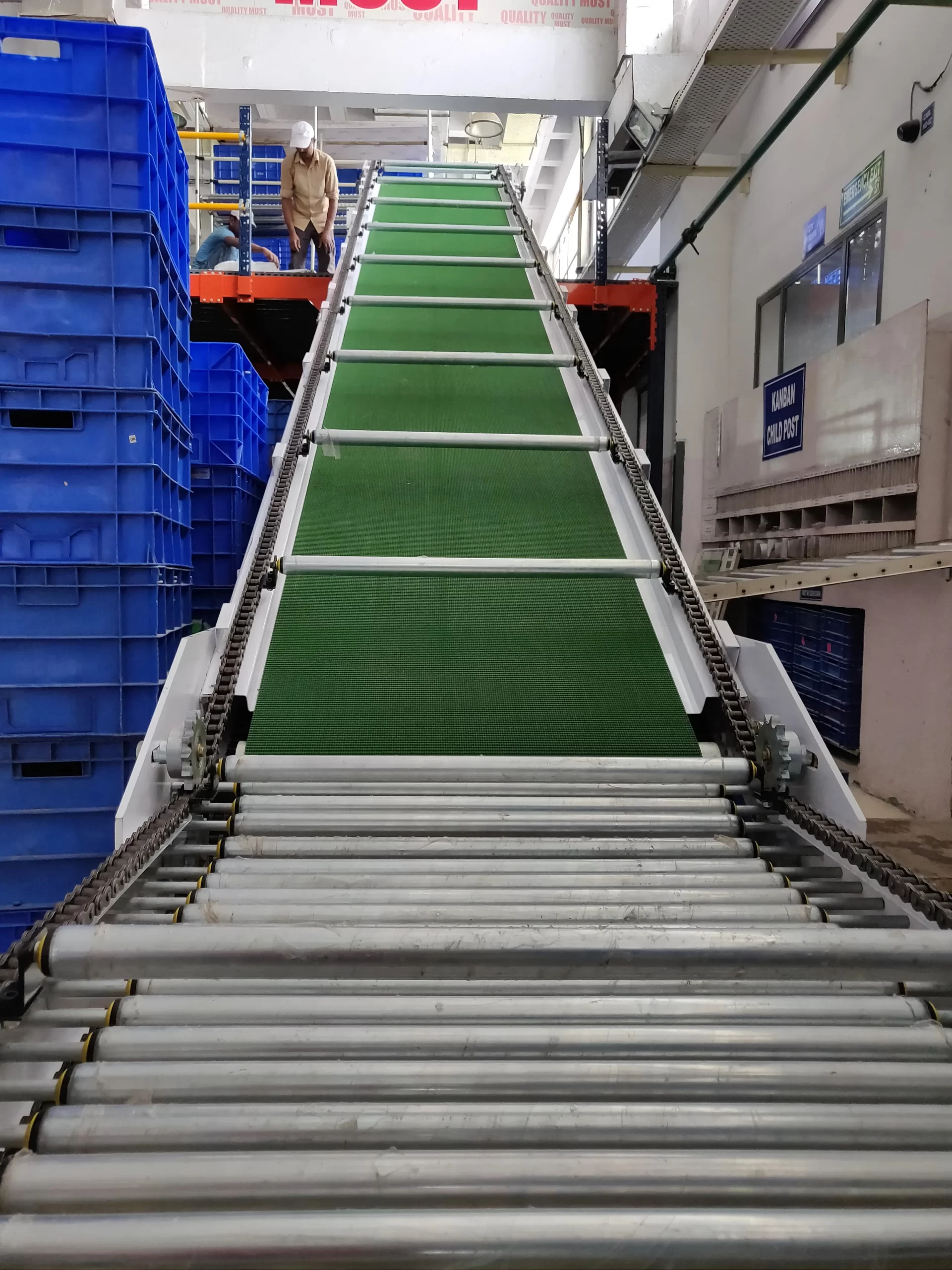In the ever-evolving landscape of industrial automation, Inclined conveyor have emerged as indispensable tools in material handling systems. These conveyors, also known as Incline conveyors or elevators, play a pivotal role in transporting goods and materials between different elevations. In this blog post, we will explore the features, advantages, and applications of inclined conveyors that make them a valuable asset in various industries.
Understanding Inclined Conveyors: Inclined conveyors are designed to move materials at an angle or incline, providing a solution for situations where a horizontal conveyor is impractical. The conveyor belt or chain is configured to navigate the incline smoothly, ensuring efficient transportation of goods from one level to another. The incline angle can be customized to suit specific requirements, allowing for flexibility in system design.
Advantages of Inclined Conveyors:
- Space Optimization:
- In facilities with limited horizontal space, inclined conveyors offer a vertical transport solution, optimizing the use of available floor space.
- Efficient Material Handling:
- Inclined conveyors facilitate the seamless movement of materials between different floors or processing stages, reducing the need for manual handling and improving overall operational efficiency.
- Customizable Configurations:
- Inclined conveyor systems can be tailored to fit the unique needs of a particular industry or application. Customization options include belt types, drive mechanisms, and safety features.
- Versatility in Applications:
- Inclined conveyors find applications in a diverse range of industries, including manufacturing, food processing, pharmaceuticals, and logistics, where the vertical movement of goods is a critical aspect of the production or distribution process.
- Gentle Handling of Products:
- Some inclined conveyors are designed to handle delicate or fragile products with care. The controlled movement ensures that items reach their destination without damage.
- Continuous Material Flow:
- Inclined conveyors contribute to a continuous flow of materials, minimizing interruptions and bottlenecks in production processes.
- Energy Efficiency:
- Modern inclined conveyor systems are designed with energy efficiency in mind, utilizing advanced technologies to reduce power consumption and operational costs.
Applications of Inclined Conveyors:
- Packaging Industry:
- Inclined conveyors are utilized for transporting packaged goods between different floors of a packaging facility, ensuring a smooth and efficient packaging process.
- Food Processing:
- In the food industry, inclined conveyors are employed for elevating products during various stages of processing, such as conveying fruits to a higher level for sorting or packaging.
- Mining and Quarrying:
- In the mining sector, inclined conveyors are used to transport extracted materials to higher ground for further processing or transportation.
- Logistics and Distribution:
- Distribution centers and warehouses use inclined conveyors to move goods between different levels, streamlining the order fulfillment process.
Conclusion: Inclined conveyors have become an integral part of modern material handling systems, offering efficiency, flexibility, and space optimization. As industries continue to evolve, the role of inclined conveyors in enhancing productivity and reducing manual labor is likely to grow. Whether it’s navigating tight spaces, facilitating continuous material flow, or ensuring the gentle handling of products, inclined conveyors have proven to be versatile and indispensable components in various industrial settings.

